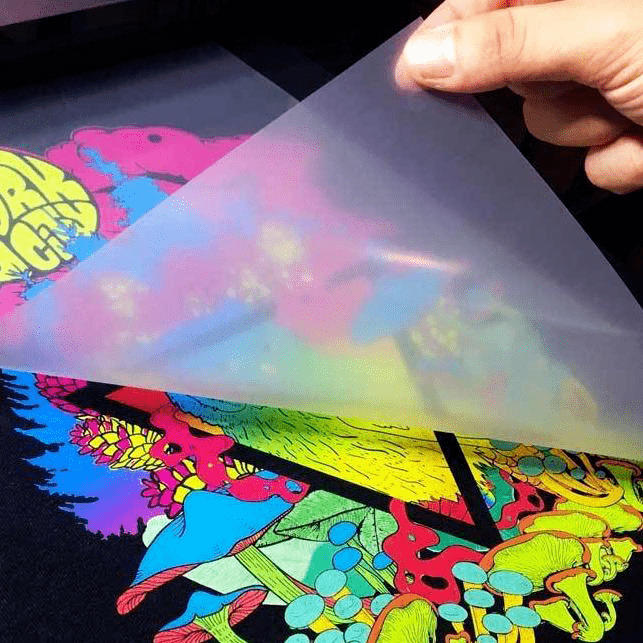DTF Printing Demystified: Whatever You Required to Understand About Direct-to-Film
Ultimate Overview to DTF Printing Techniques for Spectacular Textile Designs
Getting started on the trip of understanding DTF printing strategies can open up a globe of possibilities for developing visually captivating fabric designs. In this overview, we will certainly check out the intricate details of DTF printing, from realizing the essential basics to unraveling advanced shade techniques that can boost your layouts to brand-new heights.
Recognizing DTF Printing Essentials
DTF printing, a procedure that includes transferring layouts from a special film to fabrics using warm and stress, forms the structure of fabric printing methods. The first action in DTF printing entails producing or choosing a design that will be printed onto the fabric.
The final result is a magnificent, resilient textile design that is washable, adaptable, and immune to fading. In general, recognizing the fundamentals of DTF printing is crucial for understanding this modern textile printing technique.
Picking the Right Textile Materials
Having actually established the fundamental concepts of DTF printing methods for textile layouts, the following important factor to consider hinges on choosing the ideal textile products to complement this ingenious procedure effectively. The success of a DTF print mostly relies on the compatibility between the chosen material and the printing strategy. When choosing fabric materials for DTF printing, it is vital to consider the textile's composition, weave, and appearance. Fabrics that work well with DTF printing consist of polyester blends, spandex, nylon, and other artificial products. These fabrics commonly have a smooth surface that enables thorough and vibrant prints. Furthermore, the stretchability of these products can fit the warmth transfer process associated with DTF printing without distorting the design. It is recommended to prevent all-natural fibers such as cotton or silk, as they might not yield the same level of print clarity and longevity. By selecting the ideal fabric products, developers can make the most of the potential of DTF printing to develop resilient and spectacular fabric styles.

Mastering the Printing Process
To master DTF printing methods for fabric styles, mastering the printing process is important for accomplishing premium and regular results. The printing procedure in DTF entails numerous vital actions that call for precision and focus to information. Preparing the artwork for printing is crucial. This includes guaranteeing the style is properly sized and placed for the fabric. Next off, the design is printed onto a special DTF movie using a suitable printer with the ideal setups to accomplish ideal color vibrancy and clearness (DTF Printing). Once the design is published, it is after that transferred onto the textile utilizing a heat press maker. The temperature, pressure, and period of heat application have to be carefully controlled to guarantee proper adhesion of the design to the textile. In addition, mastering the peeling procedure after warm pressing is essential to stop any damage to the layout or textile. By developing each of these steps in the printing procedure, developers can consistently create resilient and spectacular textile styles with DTF printing methods.
Enhancing Designs With Shade Strategies

Moreover, trying out with shade slopes our website can bring a feeling of activity and fluidity to the style. By mixing shades flawlessly, a gradient effect can be accomplished, including a contemporary and vibrant touch to the fabric design. In addition, click here to find out more making use of color obstructing methods can develop striking and vibrant visuals by comparing different solid colors in unique areas of the layout.
In addition, integrating metal or neon shades can offer a eye-catching and distinct element to the fabric layout, making it stand apart and radiate a feeling of vibrancy. When tactically used, these color strategies can raise the general aesthetic charm of fabric layouts, making them extra remarkable and fascinating.
Troubleshooting Common DTF Printing Issues
After checking out various color strategies to enhance fabric designs, it is necessary to address typical DTF printing concerns that may emerge throughout the production procedure. Additionally, concerns with image clarity and sharpness can happen due to low-resolution pictures or incorrect printing methods. By being conscious of these common troubles and implementing the essential troubleshooting actions, you can improve the general high quality of your DTF published textile designs.
Conclusion
In final thought, mastering DTF printing strategies is essential for developing sensational textile styles. With practice and focus to detail, one can develop unique and beautiful textile layouts using DTF printing strategies.
Layouts))))
DTF printing, a process that entails moving styles from a special film to fabrics using warmth and stress, develops the foundation of fabric printing methods.Having established the fundamental principles of DTF printing strategies for fabric styles, the next essential factor to consider lies in selecting the ideal fabric products to match this cutting-edge process successfully. By picking the ideal textile materials, developers can make the most of the potential of DTF printing to develop sensational and resilient fabric designs.
To succeed in DTF printing methods for fabric layouts, grasping the printing procedure is necessary for achieving consistent and top my review here notch outcomes. DTF Printing. By sharpening each of these steps in the printing process, designers can constantly create sturdy and stunning fabric layouts with DTF printing strategies